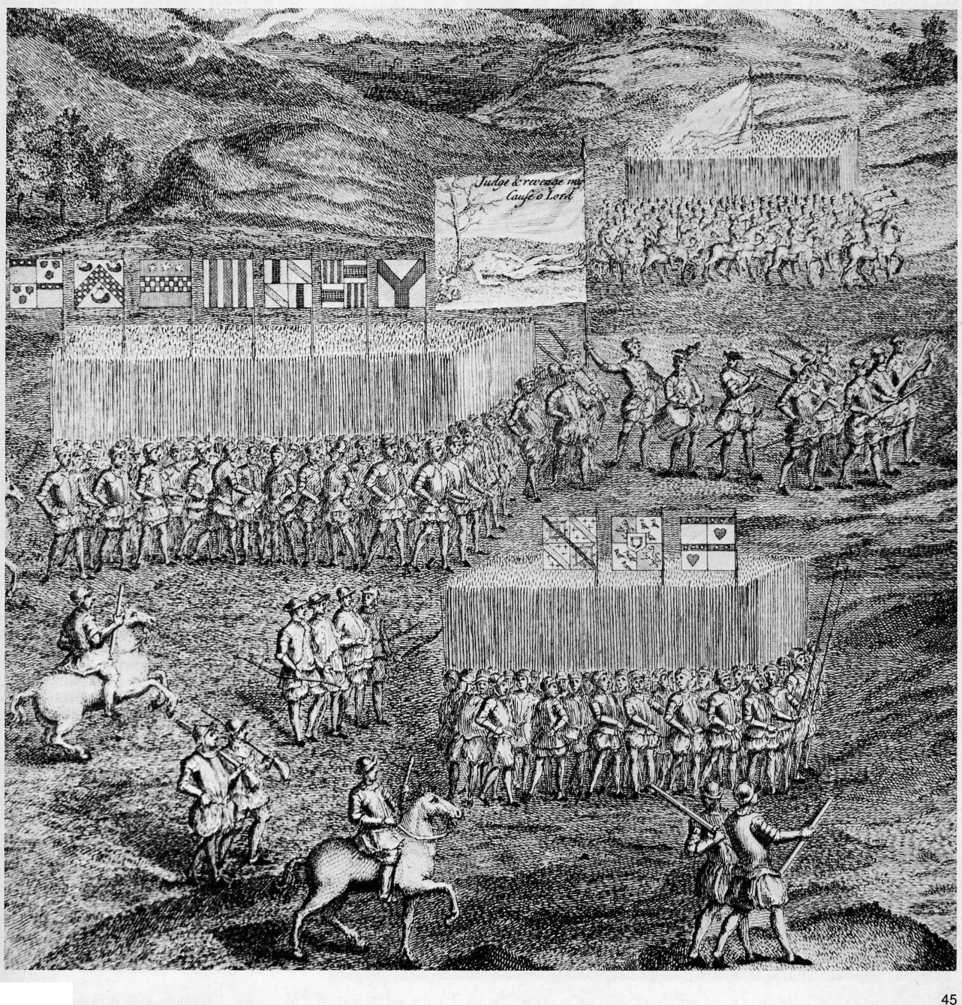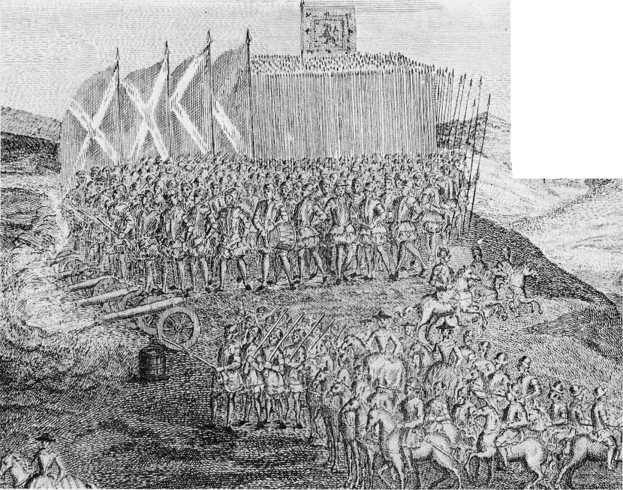A very small component of most Scots armies, at least in the 16th Century (about five percent at Pinkie). Even in the 17th Century the Scots suffered by being lightly-mounted on ‘smal I, scrubby nags’ better suited to Border skirmishes than a stand-up fight. Wap-pinshaws suggest that the ordinary gentry would wear corselet, jack or brigantine, bas-cinet helmet, gorget, 'splints’ for arms and upper legs, and mail hand and knee protection. Great nobles could have full plate armour though even King James IV is mentioned as clad in a sallet with hauberk and jack under his silk emblazoned surcoat. Basic weapon wou Id be the lance but at both the great 16th Century battles the King and nobles dismounted and fought in the front rank of the pike columns(incidentally rendering them practically invulnerable to English archery).
Usually the chief mounted troops of Scots armies were ‘Border Horse’ armed with light lance, sword, and, by 1600, one pistol, with ‘steel bonnet’— often covered by a cap — and corselet, mail or jack as protection; leather breeches and boots. They were distinguishable, if at all, from their English counterparts only by chequered plaids and the saltire of St Andrew on breast and back.
The cavalry had helmets and sleeveless buff-coats (though jacks were also permitted) and were supposed to carry either pistols and broadsword, or light lance, the latter being apparently carried by a great many, including the Commander-in-Chief’s own regiment. Lances were somewhat anachronistic by this time, but seemingly effective, breaking a Royalist foot regiment at Marston Moor and causing some trouble to the Ironsides at Dunbar.
The regiments of Horse were supposed to be of eight 60 man Troops (the C-in-C’s of ten).
A Scots trooper of the Bishops’ Wars was said to be equipped with 'fyve schot at the least, quhairof he had ane carrabin in his hand, two pistollis be his sydis, and uther tva


Standard of the Earl Marshal of Scotland, carried at Flodden. White with red lettering, brown stag's head, silver or grey antlers.
Carberry Hill (1560s). Mary Queen of Scots' troops, with royal and national standards, and artillery. (National Army Museum).

Late 15th Century horse trappings of the King of Scots. Yellow, red lions and bordering, olive lining. (James V had a set of black armour. His stirrups were covered with satin, spurs and fittings gilt, harness crimson velvet.)
At his sadill torr’, but in general Scots cavalry seem to have had fewer pistols among them than the English.
As usual there was a strong train of artillery, which in 1644 had: six Demicannon, oneCul-verin, three Quarter cannon, 54 Demiculverin, three Irorl pieces and 88 ‘Frames’ (these were very light guns for infantry support, the brainchildren of the famous Scots artillerist 'Sandy' Hamilton, who had served Gustavus Adolphus. He had invented an ultra-light 12 pounder gun, three feet long, which could be carried by one horse, and also some kind of multi-barrel infantry support weapon on a wheel-barrow-like mounting. The 'frames’ could well be these, or light field pieces like those used by Gustavus; their number makes it seem li kely that about fou r were attached to each infantry regiment.).
A second army of nine infantry regiments and three Regiments and nine Troops of Horse was despatched in 1644, and in 1647 the Scots recast their forces into a ‘New Modelled Army' of seven Infantry Regiments, each of 800 men in six companies, 15 Troops of Cavalry (80 each), and two 100 man companies of Dragoons.




 World History
World History









